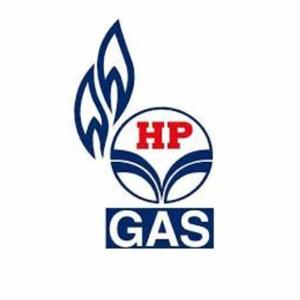Transferring a gas agency is a significant step in the LPG distribution business. Whether you're acquiring a new agency or selling an existing one, understanding the gas agency transfer application process is crucial. This guide provides a detailed overview of the steps involved, common challenges, and best practices for ensuring a smooth transition.
Understanding the Gas Agency Transfer
A gas agency transfer involves transferring ownership or management of an LPG distribution agency from one party to another. This transfer can occur for various reasons, including business expansion, retirement, or a strategic realignment of operations. The goal is to ensure continuity of service to customers while maintaining regulatory compliance and operational efficiency.
Key Steps in the Gas Agency Transfer Application Process
Initial Agreement Between Parties
The first step in transferring a gas agency is reaching an agreement between the current owner and the prospective buyer. This involves discussing the terms of the sale, the financial considerations, and the timeline for the transfer. Due diligence is essential to ensure that both parties fully understand the agency’s operational status, customer base, and financial health.
Preparation of Documentation
Accurate documentation is critical for the transfer process. Key documents include:
Agreement of Sale: A legal contract that outlines the terms of the sale, including the sale price, payment schedule, and any conditions.
No Objection Certificates (NOCs): These are required from relevant authorities to confirm that there are no outstanding legal or financial issues with the agency.
Financial Records: Up-to-date financial statements provide transparency about the agency’s performance and ensure the prospective buyer is fully informed.
Submitting the Gas Agency Transfer Application
The prospective owner must submit a gas agency transfer application to the LPG provider. This application typically includes:
Personal and Business Details: Information about the prospective owner’s background and business credentials.
Supporting Documents: Copies of the agreement of sale, NOCs, financial records, and any other required documentation.
Transfer Fee: A nominal fee as prescribed by the LPG provider.
Verification and Approval
Once the application is submitted, the LPG provider will review and verify the details. This process includes:
Background Check: Ensuring the prospective owner meets all eligibility criteria and has a clean business record.
Site Inspection: A physical inspection of the agency premises to ensure they meet safety and operational standards.
Approval: Upon successful verification, the LPG provider will approve the transfer, allowing the new owner to take control.
Transition and Handover
After receiving approval, the transition phase begins. This involves:
Operational Handover: The current owner transfers all operational responsibilities to the new owner, including customer accounts, inventory, and infrastructure.
Training and Support: The LPG provider may offer training sessions to the new owner to ensure they are familiar with operational procedures and compliance requirements.
Common Challenges in the Transfer Process
While the gas agency transfer application process is generally straightforward, certain challenges can arise:
Regulatory Compliance
Navigating regulatory requirements can be complex, especially for first-time agency owners. It’s important to understand and comply with all regulations to avoid delays in the transfer process.
Financial Transparency
Ensuring transparency in financial records is crucial. The new owner should thoroughly review all financial documents and may consider hiring an auditor to verify the agency’s financial health.
Customer Transition
Managing the transition for existing customers is essential to maintain trust and loyalty. Clear communication and maintaining high service standards during the transfer are key to a successful handover.
Best Practices for a Smooth Gas Agency Transfer
Early Planning
Start the transfer process early to allow sufficient time for completing all necessary steps. This reduces the risk of delays and ensures a smooth transition.
Professional Assistance
Consider hiring legal, financial, and industry experts to guide you through the process. Their expertise can help you navigate complex regulations and avoid potential pitfalls.
Clear Communication
Keep all stakeholders informed throughout the transfer process. This includes employees, customers, and the LPG provider. Clear communication helps manage expectations and reduces the likelihood of disruptions.
Thorough Due Diligence
Conduct thorough due diligence before finalizing the transfer. This includes reviewing the agency’s financial health, customer base, and compliance with safety and regulatory standards.
Conclusion
The gas agency transfer application process is a critical step in the successful transfer of an LPG distribution business. By following the outlined steps and adhering to best practices, both the current and prospective owners can ensure a smooth and efficient transition. Whether you are expanding your business or passing the torch to a new owner, understanding the intricacies of the transfer process will help you navigate it with confidence and ease.
For those involved in the gas agency transfer process, it is important to partner with a reputable LPG provider like My HP Gas, which offers streamlined services and support throughout the application and transfer process. By doing so, you can ensure the continued success and growth of the gas agency under new ownership.



Write a comment ...